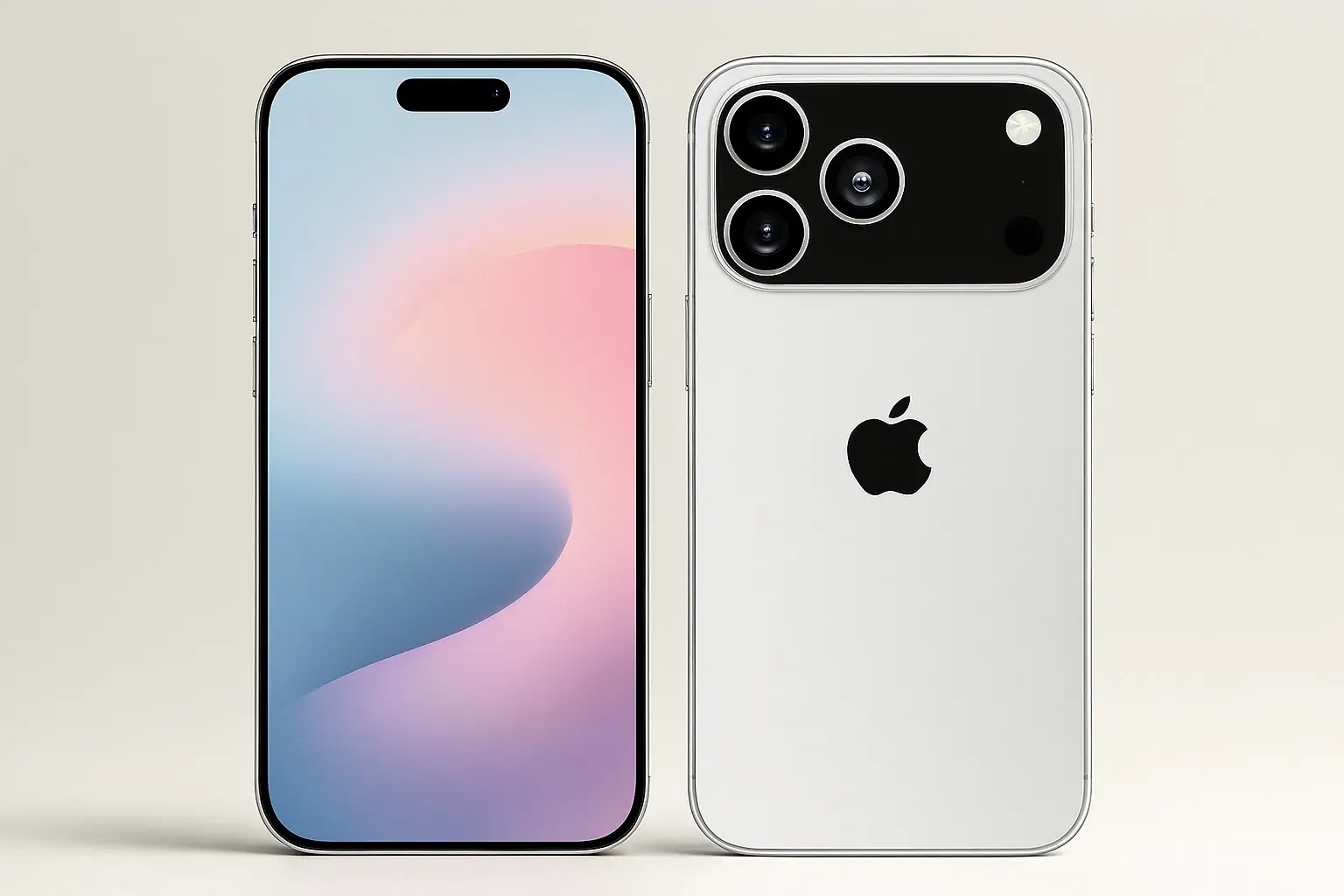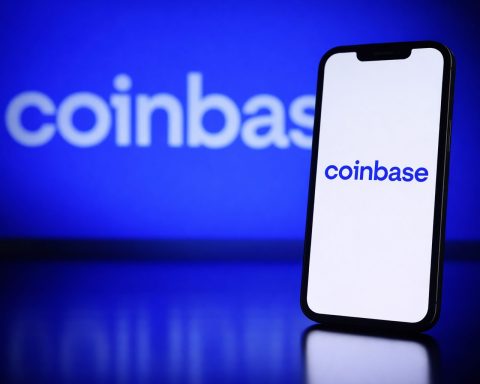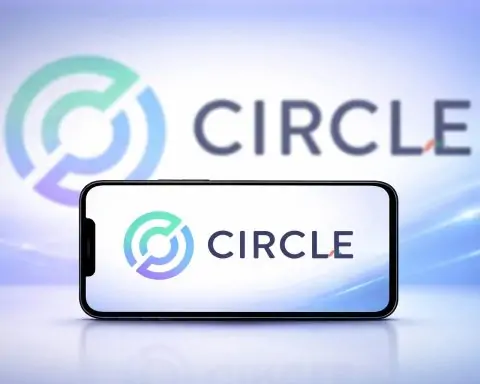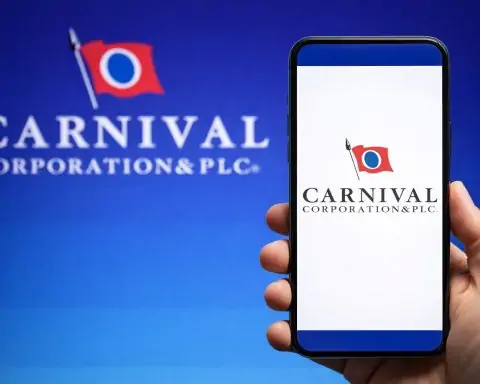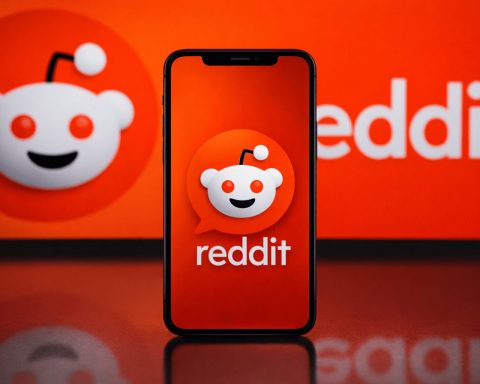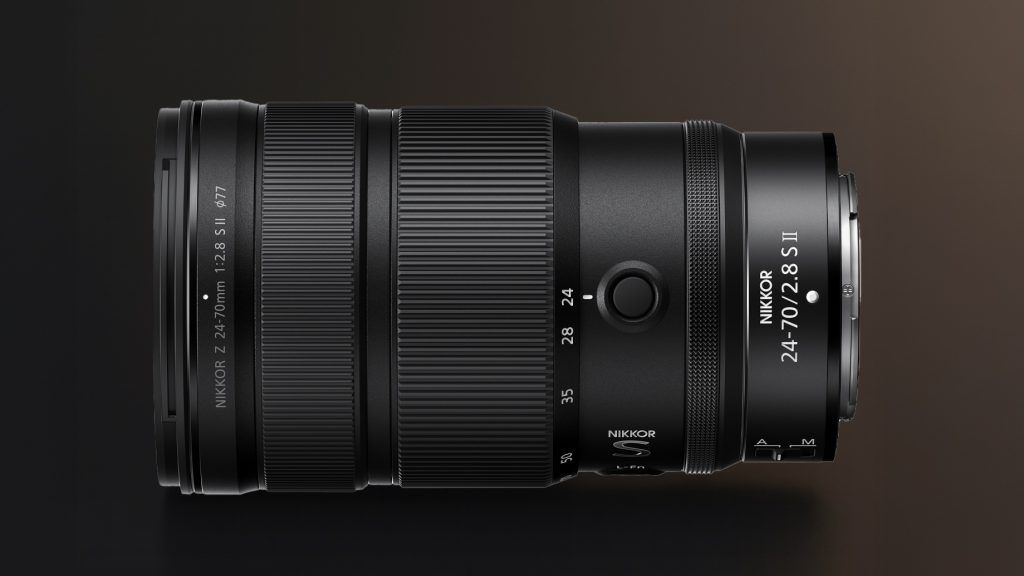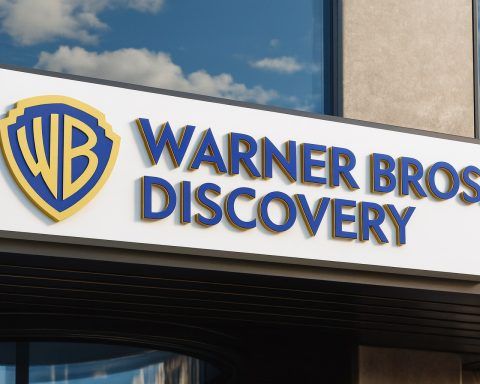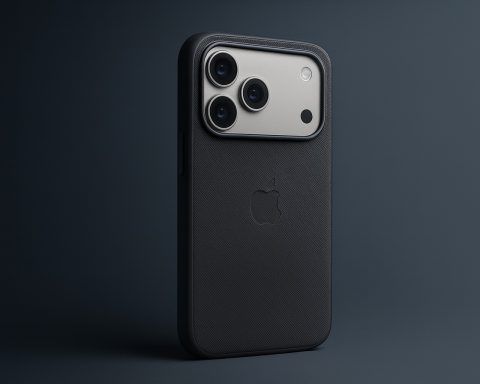Apple’s next flagship smartphone, the iPhone 17 Pro, is expected to launch in September 2025 and is shaping up to be one of the most significant iPhone upgrades in years. Rumored features point to a refreshed design, camera innovations, and display enhancements aimed at keeping Apple at the forefront of the premium phone market.
- New Design Cues: Leaks suggest the iPhone 17 Pro will introduce a new half-glass, half-aluminum chassis for improved durability, possibly replacing the titanium frame used on the 16 Pro [1]. The rear camera layout may shift to a horizontal “camera bar” spanning the back, a departure from the traditional square camera bump [2]. Dummy unit photos and CAD renders indicate three lenses arranged horizontally with more spacing – a design language shared with a new mid-tier “Air” model in the lineup [3] [4]. Overall, the phone is expected to have slimmer bezels and retain the Dynamic Island for the front camera/Face ID (though there are conflicting rumors on whether the Dynamic Island will narrow in size) [5].
- FaceTime Camera Changes: The front-facing FaceTime camera is due for a significant upgrade. Apple is reportedly testing a 24-megapixel selfie camera (up from the long-standing 12MP sensor) with a six-element lens for sharper images and video calls [6]. This higher-resolution front camera would be a boon for FaceTime and content creators. (One leak even showed the front camera position shifting on the ultra-thin iPhone 17 Air model to accommodate its design [7], though the 17 Pro is expected to keep the camera in the current position within the Dynamic Island.) There’s also chatter about under-display Face ID in future iPhones, but most analysts believe that under-screen TrueDepth sensors won’t arrive until the iPhone 18 Pro in 2026, not the 17 Pro [8]. For now, the iPhone 17 Pro should continue with a visible selfie camera – just a much improved one.
- Display Enhancements: All iPhone 17 models are rumored to get Apple’s 120Hz ProMotion displays, meaning even the non-Pro iPhone 17 will have smoother scrolling and animations [9]. This is enabled by LTPO OLED panels across the lineup, ending ProMotion’s exclusivity to Pro iPhones. Always-On Display capability would technically be possible on all models with LTPO, though it’s unclear if Apple will enable it for non-Pros [10]. In terms of size, the 17 Pro is expected to stick to 6.3 inches, but the introduction of the new iPhone 17 Air (a super-slim 6.6-inch device) means Apple is adjusting its sizes. Notably, Apple is eliminating the Plus model and increasing the base iPhone 17 to 6.3″, so the standard and Pro will both be 6.3″ [11] [12]. All models will still feature a Dynamic Island – either the same size as the 16’s or slightly narrower if new metalens Face ID tech is ready [13]. Taken together, the iPhone 17 Pro’s display will offer top-end refresh rates and possibly slimmer notch areas, keeping it competitive with rival flagships.
Expected Launch Timeline: Apple traditionally unveils new iPhones in early September, and this year looks no different. Multiple reports point to a special event likely on September 9, 2025 (a Tuesday) for the iPhone 17 series launch [14] [15]. If that date holds, we can expect the iPhone 17 Pro to hit stores later in September after the usual one-week preorder period. Apple has not officially confirmed the date yet, but they typically send invites two weeks prior [16]. This timing aligns with Apple’s usual cadence and gives the company a chance to dominate tech headlines going into the fall season.
Strategic Importance: The iPhone 17 Pro is more than just another yearly upgrade – analysts see it as a strategically critical device for Apple. For one, it showcases Apple’s latest silicon and AI capabilities. The 17 Pro is expected to run an A19 chip (continuing Apple’s 3nm chip advances) and will fully leverage iOS 18’s new AI-powered features (more on those below) which require the neural engine prowess of the latest chips. By restricting cutting-edge features like on-device generative AI to new hardware, Apple gives high-end buyers an extra incentive to upgrade [17]. Additionally, Apple appears to be positioning the 17 Pro as a tool for content creators. Bloomberg’s Mark Gurman reported that this year Apple’s emphasis is on video recording improvements – aiming to entice vloggers and filmmakers to rely on the iPhone 17 Pro instead of dedicated cameras [18]. “One of the goals for 2025’s iPhone line is to get the vlogging community and other video creators to move away from standalone cameras and use the iPhone for even more of their work,” Gurman noted, emphasizing Apple’s plan to tout video capabilities “more heavily than ever” during the launch [19]. Indeed, rumored additions like an 8× optical zoom periscope lens and even a possible pro video camera app suggest Apple is serious about appealing to professionals [20].
There is also a broader strategic angle: the iPhone 17 family will include that new “iPhone 17 Air” model – a mid-tier device that’s thinner and slots between the base 17 and the Pro [21] [22]. This shake-up shows Apple responding to market trends (the Plus model’s poor sales [23]) and seeking new ways to attract consumers who want something more premium than a base iPhone but at a lower price than a Pro. The 17 Pro, as the flagship, anchors the top of the lineup and carries the burden of justifying Apple’s high prices (which some analysts predict may even rise further [24]). Its success is crucial for Apple’s iPhone revenues. Tech analysts note that mature markets have longer upgrade cycles now, so truly compelling new features are needed to drive purchases [25]. By introducing a fresh design, boosting the front camera, and integrating advanced AI and camera tech, the iPhone 17 Pro is Apple’s attempt to make a splash and maintain its edge over Samsung, Google, and other competitors in the ultra-premium segment. In short, the iPhone 17 Pro is not just another annual refresh – it’s a statement about Apple’s technological leadership and an attempt to unlock new use cases (like pro mobile videography) that keep the iPhone central to people’s lives.
iOS 18 and Apple Intelligence: Bringing AI to the iPhone
Alongside the new iPhones, Apple will debut iOS 18, and this year’s update is notable for its heavy emphasis on AI-powered features. In fact, Apple has bundled its various on-device AI capabilities under a new umbrella term: Apple Intelligence. This “personal intelligence system” in iOS 18 represents Apple’s answer to the generative AI wave – but executed in a characteristically Apple way, with privacy and on-device processing at the forefront.
Key AI Features in iOS 18: Apple Intelligence in iOS 18 introduces a suite of generative AI and machine learning features integrated throughout the system. According to Apple, it is “built into your iPhone, iPad, Mac, and Apple Vision Pro to help you write, express yourself, and get things done effortlessly,” all while keeping personal data private [26]. In practical terms, iOS 18’s AI features include:
- Intelligent Writing Tools: Anywhere you can type, you can now invoke AI assistance. The system can proofread and rewrite text in different tones, or summarize long passages into a shorter digest, bullet points, or even a table [27] [28]. For example, you could select an email draft and ask for a more concise version, or have iOS summarize a lengthy email thread into key points. These tools work across Mail, Messages, Notes, Pages, and third-party apps, providing system-wide writing help [29] [30]. Essentially, your iPhone gains a built-in writing assistant for the first time.
- Smarter Messages and Mail: iOS 18 can generate Smart Replies for emails and messages by understanding the context of incoming text [31]. In Mail, the system can identify questions asked of you and suggest one-tap responses that include the relevant info [32]. There’s also a new feature where long emails can be accompanied by an AI-generated summary at the top, so you don’t have to read walls of text to get the gist [33]. Notifications, too, are summarized and prioritized – iOS 18 uses AI to rank what notifications are most important, grouping less critical alerts so they don’t overwhelm you [34] [35].
- “Personal Assistant” Upgrades to Siri: Apple’s virtual assistant gets a long-awaited boost from generative AI. Siri in iOS 18 is described as “more natural and capable” [36]. Apple Intelligence allows Siri to handle complex multi-step requests and maintain context across follow-up questions. Notably, Apple has integrated ChatGPT into Siri via Apple Intelligence (in iOS 18.2 and above) for answering more complex queries [37]. This means you can ask Siri things like, “Explain quantum physics to me” or “Create a travel itinerary for Paris,” and Siri will leverage OpenAI’s GPT-4.1 model behind the scenes to generate a detailed answer [38]. (Apple doesn’t send your data to OpenAI’s servers by default; it uses on-device processing and a “Private Cloud” approach for privacy [39] [40], and users can opt to link a ChatGPT account for expanded capabilities [41].) Siri also has a new interface – an animated glowing outline – and you can now smoothly switch between voice and typing with Siri [42]. Overall, Siri is evolving from a basic voice assistant to something closer to a true AI helper.
- Visual Intelligence and Image Generation: iOS 18 isn’t just about text. A feature called Visual Intelligence lets you point your iPhone camera at objects or text and get instant AI-driven information and actions [43]. For example, pointing at a restaurant sign could pull up its hours, ratings, and allow you to create a calendar reservation [44]. You can scan a flyer and add an event to your calendar from it, or even identify plants and animals via the camera [45]. In Photos, a new “Clean Up” tool uses AI to remove unwanted objects or photobombers from your pictures, similar to Google’s Magic Eraser [46]. On the creative side, Apple Intelligence enables image generation features: a tool called Image Wand can turn a rough sketch you draw into a polished image, and a “Genmoji” feature lets you create custom emoji/stickers based on prompts [47]. There’s also a feature to generate on-the-fly photo slideshows or “memory movies” just by describing what you want to see (e.g. “a video of our beach vacation”) [48] – the system will pick relevant photos/videos and even set it to music. These fun additions show Apple dipping into AI image creation while keeping it constrained to personal, privacy-safe use cases.
- Productivity Boosters: Apple Intelligence extends into productivity apps as well. The Notes and Phone apps now let you record audio and get automatic transcripts and summaries of those recordings [49]. Imagine recording a meeting or lecture with your iPhone and instantly getting a condensed summary of the key points – that’s now possible on devices with Apple Intelligence. There’s also a new Focus mode called “Reduce Interruptions” that uses AI to analyze notification content and only show you urgent ones, labeling others as “maybe important” and hiding them when you need concentration [50]. These features underscore Apple’s approach: using AI to sift signal from noise, whether it’s in your email, notifications, or audio notes.
All told, iOS 18 represents Apple’s most significant AI-centric update ever, bringing capabilities that rival some features of ChatGPT, Google Assistant, and Microsoft’s AI integrations – but doing so in a way that’s built into the device and emphasizes user privacy. As Apple CEO Tim Cook put it, “Apple Intelligence is generative AI in a way that only Apple can deliver,” aiming to “transform what our users can accomplish” while keeping their data safe [51].
Compatibility Limitations (“Only on iPhone 15 Pro and later”): There is a catch to all these futuristic features: not every iPhone that runs iOS 18 will get Apple Intelligence. In fact, Apple has limited the full suite of AI features to devices with the latest and most powerful chips. Only the iPhone 15 Pro/Pro Max and newer (including the upcoming iPhone 16 and 17 series) support Apple Intelligence and its generative AI capabilities [52] [53]. Older models can update to iOS 18 and enjoy basic improvements and security updates, but they won’t have the Apple Intelligence features (no AI writing tools, no on-device ChatGPT via Siri, etc.) [54]. Apple cites the processing requirements of these features – the A17 Pro chip in the 15 Pro introduced a powerful Neural Engine and 8GB RAM that are leveraged for on-device AI. For instance, real-time photo analysis or text generation benefits greatly from the hardware acceleration and memory of the newer chips. The decision has caused some frustration among users and developers. Online forums saw mixed reactions: some users with older iPhones felt “left out” unless they buy a new device, while others acknowledged the technical need for high-end hardware [55] [56]. A Reddit discussion on iOS 18’s rollout noted that Apple Intelligence was the only major iOS 18 feature not coming to older phones, which put those users on the sidelines unless they upgrade [57]. There’s even a beta waitlist involved – early on, even iPhone 15 Pro owners had to sign up to enable Apple Intelligence in the 18.1 beta, indicating Apple is scaling up the feature gradually [58].
From a developer perspective, this limitation means apps on older iPhones can’t tap into these new OS-level capabilities. However, developers targeting the latest devices can start to integrate with Apple’s APIs for things like creating summary data or using the new image generation tools in their apps. Apple has provided some Apple Intelligence APIs and a “Personal Intelligent Assistant” framework at WWDC 2025 for app developers, but again, those will only function on supported devices. Some devs have expressed excitement about new possibilities (like apps that could ask the system to summarize a webpage or generate an image on the fly), while others are cautious, noting that “these features aren’t fully baked yet” [59]. Early hands-on reports with the developer beta mentioned that some AI features were still rough or slow, and many were not available until the iOS 18.1 update in October 2024 introduced the first set of Apple Intelligence features [60]. So, developers are watching carefully to see how users respond and how well Apple’s implementation works at scale.
Public Reception: Among the general public, the reception to iOS 18’s AI features has been a mix of intrigue and skepticism. On one hand, many users are excited to have ChatGPT-like powers built into their iPhone in a privacy-friendly way. Features like being able to long-press a block of text and get a summary, or ask Siri to plan a trip iteratively, have been lauded as potentially “game-changing for productivity.” College students, for instance, see the appeal of summarizing lecture notes or getting writing help directly on their phones. On the other hand, Apple’s choice to lock Apple Intelligence to newer devices rubs some the wrong way. Comments on social media and Apple forums include people complaining that their perfectly capable iPhone 14 Pro or iPad Pro can’t use the new features, viewing it as a push to sell more hardware. “For anyone with iPhone 15 or below, we are left out by Apple,” one Redditor lamented, pointing out that only the 15 Pro and later get the AI goodies [61] [62]. Some users also reported confusion in enabling Apple Intelligence – it requires opting in via Settings, and during the beta it even required joining a waitlist as mentioned. Early adopters who did get to try it have given mixed feedback: the writing tools are generally praised (proofreading in multiple languages and automated email replies were seen as useful), while the image generation (Genmoji, etc.) was seen as a fun novelty more than a must-have. And Siri’s improvements garnered cautious optimism – users like that Siri can handle more complex tasks now, though some note it’s “still not as flexible as ChatGPT on the desktop.”
From a privacy and ethical standpoint, Apple’s approach has been well-received. Tech analysts note that Apple is “setting a new standard for privacy in AI,” since all personal context used by Apple Intelligence stays on the device or Apple’s secure cloud, with no third-party access to your data [63] [64]. This stands in contrast to cloud-based AI assistants that vacuum up user data. Developers and privacy advocates have applauded this stance, as it alleviates concerns about sensitive data (e.g. your emails or photos) being used to train AI models without consent. Apple even built in visual indicators and user controls – for example, you can turn off Apple Intelligence features if desired, and using them requires explicit action (they’re somewhat hidden behind “⋯” menus and edit functions to avoid accidental AI use).
In summary, iOS 18 marks Apple’s bold entry into the generative AI arena. The features branded under Apple Intelligence are ambitious – from natural language generation and understanding to image creation and computer vision. While only owners of recent high-end iPhones get to enjoy them fully, those who do have reported that it meaningfully enhances the iPhone experience, whether by drafting better messages, decluttering your photos, or making Siri much smarter. It’s a first step, and Apple is likely to expand and refine these AI capabilities in subsequent updates (rumor has it that iOS 19 will widen support as hardware improves). For now, Apple has signaled that AI will be a core part of the iPhone experience going forward, in its own uniquely Apple fashion.
Rumored $699 MacBook: Apple’s Chromebook Competitor?
Another headline-grabbing development is Apple’s rumored plan to launch a lower-cost MacBook aimed at the education market. Dubbed by some as the “$699 MacBook,” this would be an unprecedented move for Apple – directly targeting the budget laptop segment dominated by Chromebooks. The August 22 Forbes report highlighted new details about this project, painting a picture of a late-2025 or 2026 debut for Apple’s most affordable laptop in years.
What We Know About the Cheaper MacBook: According to supply chain reports and top Apple analyst Ming-Chi Kuo, Apple is indeed working on a budget-friendly MacBook to expand its market share in schools and among price-conscious consumers [65] [66]. Here are the key rumored details:
- Price Point: The laptop would slot in below the MacBook Air in price. While Apple hasn’t sold a new MacBook below $900 in modern times, the target price for this model is said to be in the $599–$799 range, with most rumors centering around $699 as a likely starting price [67] [68]. For context, the current 13″ MacBook Air starts at $999, though Apple has continued to sell the older M1 MacBook Air which (especially with retailer discounts) could be found for ~$749. In fact, in 2024 Walmart briefly offered the M1 Air for $699 [69]. That was still an older model on clearance – what’s different here is Apple would introduce a new MacBook at roughly that $699 price from day one, which would be a first.
- Positioning and Strategy: Apple’s goal is explicitly to compete with Chromebooks in the education sector [70]. Chromebook laptops (running Google’s Chrome OS) have become ubiquitous in schools due to their low cost (often $300 or less for basic models) and easy management. Apple once had a strong hold in education (remember the old eMacs and white MacBooks in schools) [71], but in the last decade they’ve lost ground to Google. This new MacBook would be Apple’s attempt to win back classrooms by offering a device that, while still not as cheap as the cheapest Chromebook, could be justified by longer lifespan and better quality. Apple is reportedly aiming for this low-cost MacBook to account for up to ~25% of its Mac sales once launched [72] – a sign they see significant volume potential. By pricing it around $699, Apple is banking on the idea that schools (and students/families) might be willing to pay a bit more than a bargain Chromebook in exchange for a full-fledged macOS device that could last many years. As Macworld noted, schools need devices that last more than a few years, and many cheap Chromebooks “break after three years” of use [73] [74]. Apple could leverage its reputation for durability and long support: a $699 MacBook that survives 5+ years and remains fast might actually save schools money versus replacing $300 laptops every 2-3 years [75] [76]. Moreover, Macs are known to have strong IT management tools and are generally secure, which appeals to school IT departments that often have small staffs [77]. So the strategic play is clear: undercut Apple’s own pricing norms to steal share from Chromebooks by offering a better-built laptop that’s still (relatively) affordable.
- Specifications: To achieve a lower price, Apple appears ready to depart from its usual Mac formula in a couple of ways. First, instead of using an M-series Mac chip, the budget MacBook is rumored to run on an Apple A-series chip – specifically the A18 Pro (which is the same processor that powered the iPhone 16 Pro in 2024) [78] [79]. This is a big shift: all Macs since 2020 have used M1, M2, etc. chips. The A18 Pro is a smartphone/tablet chip, but it’s quite powerful for its class. Reports say the A18 Pro’s CPU performance is roughly on par with the M1 chip (it actually outperforms M1 in graphics) [80]. By using a previous-generation iPhone chip, Apple can save costs – A-series chips are produced in huge volume and lack some of the expensive components (like Thunderbolt controllers) that M chips have. That leads to the second spec compromise: Thunderbolt support is likely absent. The A18 Pro doesn’t natively support Thunderbolt connectivity [81], so the cheap MacBook would probably come with standard USB-C ports (limited to USB 3 speeds). For the target market, that’s not a huge loss; students aren’t typically connecting multiple 6K displays or RAID arrays to their laptops. Additionally, the RAM may be lower – current Macs start at 8GB for base MacBook Air, but the A18 Pro in iPhones has 8GB total. It’s unclear if Apple would allow a higher RAM configuration in an A18-powered MacBook; some observers worry 8GB might be limiting for heavy multitasking, but again, for a school-oriented device 8GB might be acceptable. Storage might start at 128GB or 256GB to keep costs down (Apple could choose 128GB to hit the lowest price point, though 256GB is more usable for students who may store media). The laptop is expected to have a 13-inch LCD display (similar in size to the MacBook Air 13.6″, but possibly a cheaper panel, maybe even thicker bezels or standard 60Hz refresh to cut costs) [82]. Interestingly, one report from DigiTimes claimed the device could have a 12.9-inch display, essentially reviving the dimensions of the old 12-inch Retina MacBook from 2015 but slightly larger [83] [84]. A smaller screen would slightly lower costs and differentiate it from the 13.6″ Air. It would also make the laptop very portable for students. In terms of design, it’s said to be an “ultra-thin, lightweight” plastic shell – possibly using a different material or less premium aluminum alloy to save money [85]. Colors might be fun: Kuo mentions shades like blue, pink, yellow in addition to the usual silver [86], perhaps to appeal to students and echo the iBook G3 clamshell days or current iPad 10th-gen colors.
- Launch Window: The cheaper MacBook is not expected imminently in late 2025, but rather gearing for 2026. Kuo’s sources indicate that mass production is slated for Q4 2025 or Q1 2026, with shipments beginning later in 2026 [87]. This suggests Apple could announce it in 2025 but ship in 2026, or simply wait to introduce it closer to its availability. Some rumors theorize Apple might time it with a spring education-themed event or WWDC 2026. There’s also chatter that Apple is considering two variants of the low-cost MacBook – perhaps a regular 13” and a slightly larger 15” – but details on a second model are scant [88]. It’s also possible Apple will want to see the market reaction to the first model before expanding the lineup.
Comparisons to Chromebook Strategy: If this low-cost MacBook materializes, it will invite direct comparisons to Chromebooks. Google’s Chromebooks gained traction by being extremely affordable, cloud-centric, and easy to manage (through Google Workspace for Education). Apple’s approach would differ: even at $599–$699, the MacBook would cost double a basic Chromebook. Apple will argue, however, that the MacBook can do far more. It runs macOS (with support for full desktop applications, coding environments like Xcode, etc.), whereas Chromebooks are mostly limited to web apps and Android apps. For high school or college students especially, a MacBook could be far more useful for creative work (like GarageBand, video editing in iMovie/Final Cut, programming, etc.) compared to a low-power Chromebook. Apple may also leverage its ecosystem – schools that use iPads or have students with iPhones might appreciate how well the Mac integrates (iMessage on Mac, AirDrop, etc., which Chromebook can’t do). Another factor is longevity: Apple supports Macs with OS updates for many years (often 7+ years), while many Chromebooks hit their Auto-Update Expiration in 5-6 years or less. So a MacBook could remain secure and useful for a longer portion of a student’s life (imagine a laptop one could use from freshman year of high school all the way to college). Of course, Apple will need to convince budget-strapped school districts of the up-front value. Analysts are split on how big an impact a $699 MacBook would have. Some say Apple has no choice but to play in this market if it wants to stop the “generation of kids growing up on Chromebooks” from turning into adults who avoid Macs. Others, like Macworld’s editors, are skeptical that Apple is willing to sacrifice its high margins – noting that Apple already offers $299 iPads to schools and has so far positioned the iPad (with keyboard attachments) as its Chromebook alternative [89]. They argue that even $600 might be too high to sway many districts that can get $300 devices, and that Apple historically “has never made a laptop that cheap” and likely won’t start now [90].
However, the fact that solid reporting from Kuo and DigiTimes persists into 2025 indicates something is afoot. Apple’s recent moves also give credence to the idea: they allowed retailers to discount Macs (M1 Air at $699 at Walmart) to gauge demand at that price; they are designing new chips (A18 Pro) that can be repurposed; and Mac sales have been a bit soft in 2024/2025, so a new lower-priced segment could boost numbers [91]. Indeed, Apple’s Mac revenues could use a jolt – and an education push could provide one, while also bringing young users into the Apple ecosystem early (who might then upgrade to MacBook Pros or other Apple devices later).
Expected Impact and Expert Opinions: Ming-Chi Kuo believes a low-cost MacBook will “drive MacBook purchases” and expand Apple’s market share in 2026 [92]. Tech industry watchers say that if Apple succeeds in making a $699 laptop that doesn’t feel overly compromised, it could “change the game” in education (as one YouTube analyst put it [93]). There’s also the question of software: would Apple do anything different for education, such as special asset management or cloud features? Google’s edge is the Google Classroom ecosystem. Apple does have Apple School Manager and Classroom apps, and of course software like Pages/Keynote/Numbers are free. We might see Apple double down on those offerings to better compete with Google’s suite.
One concern is that by using an iPhone chip, the MacBook might blur the line between Mac and iPad. Essentially this device could be seen as an iPad in a laptop form factor (since A18 is also in iPads). But it will run macOS, which is a big differentiator. Developers may need to ensure their Mac apps run efficiently on A-series chips, but since Apple Silicon Macs share architecture with A-series, most apps should run fine (if anything, some high-end apps might not expect only 8GB RAM). Thunderbolt absence means some pro accessories won’t work, but that’s likely acceptable for the target market.
In summary, the rumored cheap MacBook represents Apple’s response to the Chromebook challenge. It’s a calculated risk: lowering the cost of entry to the Mac ecosystem in hopes of long-term gains in market share and services revenue (each new Mac user potentially subscribes to iCloud, Apple Music, etc.). If it launches as rumored, consumers in 2026 could have an intriguing new option: a $699 MacBook that undercuts even some Windows laptops. Keep an eye on this developing story, as it could mark a significant strategic shift for Apple’s Mac business – one not seen since the days of the plastic MacBook over 15 years ago.
Apple’s Formula 1 Movie: A Box Office Hit and Streaming Strategy
In an unexpected crossover between tech and Hollywood, Apple Original Films’ “F1: The Movie” has become one of 2025’s biggest blockbuster successes. This high-octane movie, centered on Formula 1 racing and starring Brad Pitt, was produced by Apple with a reported budget around $200–300 million, and it represents Apple’s most ambitious foray into big-budget filmmaking to date. The film’s performance and Apple’s handling of it shed light on the company’s broader content strategy and the growing prestige of Apple TV+ in entertainment.
Box Office Success: “F1: The Movie” roared into theaters on June 27, 2025, and immediately debuted as the #1 movie worldwide [94]. It smashed expectations for an original (non-sequel) film in a summer full of franchise fare. By early August, it had grossed over $552 million at the global box office [95]. Apple proudly noted that this makes F1 the highest-grossing original feature film of 2025 (so far) and even the biggest hit of Brad Pitt’s career in terms of box office [96]. In North America, the film opened with about $57 million in its first weekend, surpassing analyst projections of ~$45M [97] [98]. International audiences have been even more enthusiastic – racing is a global sport, and the movie’s overseas grosses soared (over $400M of its total came from international markets) [99]. Critics and audiences also responded well: F1 earned an “A” CinemaScore from opening-night moviegoers, and holds a 97% audience score on Rotten Tomatoes [100]. This strong word-of-mouth helped it continue drawing crowds beyond the initial rush. Notably, F1 was filmed with IMAX cameras and promoted as a must-see theatrical experience. This paid off with IMAX viewers: it became the highest-grossing Hollywood film of the year in IMAX, earning $85 million from IMAX screenings alone [101]. At one point, IMAX tickets accounted for over 20% of the film’s opening weekend gross – a very high share – showing that fans sought out the premium format [102].
The movie’s success was such that in August, Apple and distribution partner Warner Bros. decided to re-release “F1: The Movie” in IMAX theaters for an encore run [103]. Citing “popular demand,” they brought the film back to IMAX screens on Aug 8 and expanded it on Aug 15 to more large-format theaters [104]. This kind of rerun is usually reserved for top blockbusters, which signals just how big a hit the film became. As Matt Dentler, Apple’s head of original features, said, “Audiences around the world have embraced ‘F1 The Movie’ as an adrenaline-pumping big screen experience…its rerelease in IMAX is a testament to the global popularity of the film.” [105] Indeed, for Apple – a newcomer in Hollywood – this is a major victory. Just a few years ago, Apple’s film ventures were mostly limited releases and streaming-only titles. F1 has proven Apple can back a commercial crowd-pleaser on par with traditional studios.
Streaming Plans and Apple TV+ Implications: With the theatrical run winding down as summer ends, the question becomes: when and how can audiences watch F1: The Movie at home on Apple TV+? Apple has not publicly announced the streaming premiere date yet, but based on industry norms and hints, it’s expected that F1 will land on Apple TV+ after a traditional theatrical window – likely about 45 to 60 days after its theatrical debut, meaning late August or September 2025. (Apple’s press materials did note other films: for example, another Apple film releasing in theaters August 15 is set to hit Apple TV+ by September 5 [106], roughly a three-week window. Given F1’s success, Apple may have given it a longer exclusive run in theaters, possibly around 8-10 weeks.) Many observers anticipate an Apple TV+ debut sometime in the early fall of 2025, allowing the film to maximize box office revenue first.
When it does arrive on the service, F1: The Movie will instantly become one of Apple TV+’s marquee pieces of content. The streaming strategy here is telling: Apple partnered with Warner Bros. to handle global theatrical distribution (leveraging Warner’s marketing and theater relationships), but Apple retains the streaming rights. This means after the theater window, F1 becomes an Apple TV+ exclusive. It’s a win-win approach that Apple seems to be embracing more. The Los Angeles Times noted that films which get a robust theatrical rollout tend to perform better when they hit streaming because they’ve entered the cultural zeitgeist [107]. In other words, millions more people will be aware of and excited for F1 by the time it’s on Apple TV+, compared to if Apple had quietly dropped it online with little fanfare. We’ve seen a similar approach with Apple’s past prestige films: “Killers of the Flower Moon” (Apple funded, but released in theaters via Paramount in late 2023) and “Napoleon” (Apple’s Ridley Scott film released by Sony/Columbia in 2023) both had theatrical runs before hitting TV+. However, those films were more awards-oriented and didn’t light up the box office. F1 is different – it’s a proof of concept that an Apple-backed film can be a mainstream blockbuster.
The implications for Apple TV+ are significant. First, it bolsters Apple TV+’s library with a big-budget, popular movie – something the service, known more for upscale dramas and series, could use more of. Subscribers will get a major new movie without an extra fee, possibly driving new sign-ups or retaining users who might have otherwise canceled after wrapping a show. Apple made history in 2022 by winning the Best Picture Oscar for CODA (the first streaming service to do so) [108]. Now in 2025, Apple can boast having one of the year’s top-grossing films as well. It’s a statement that Apple is not just in the prestige game, but also willing to play in the blockbuster arena that Netflix has largely avoided (Netflix rarely does wide theatrical releases).
Apple’s Broader Original Content Strategy: Apple’s involvement with F1: The Movie fits into a broader evolution of its Apple TV+ strategy. Initially, Apple TV+ focused on relatively small-scale, high-quality productions (think Ted Lasso, The Morning Show, indie-style films). But Apple has been ramping up investment – reportedly Apple is spending $6+ billion per year on original content for TV+ now [109]. This includes not just series but also big films and live sports. Apple has already dipped into live sports by securing exclusive rights to Major League Soccer (MLS) and weekly MLB baseball games. Now, with F1, Apple’s sights might be on motorsports: interestingly, Formula 1’s global media rights will be up for grabs in 2026, and Apple is rumored to be a serious contender to acquire those rights [110] [111]. The Morning Brew pointed out that F1: The Movie can be seen as a giant commercial for Apple – both showcasing iPhone camera technology (the film used modified iPhone cameras for some racing footage) [112] and currying favor with F1 as an organization. In fact, F1’s own media team loved the iPhone camera rigs used during production so much that they are considering incorporating that tech into real race broadcasts [113]. If Apple were to partner with F1 on rights, having produced a successful movie with F1’s cooperation (seven-time champion Lewis Hamilton is a producer on the film) certainly doesn’t hurt. So Apple’s content strategy is increasingly synergistic with its product and service goals – blending hardware (show off iPhones), content (movies/series), and services (possibly sports streaming) into one ecosystem.
Apple is also using traditional Hollywood talent and methods to boost its credibility. For F1, they enlisted top-tier filmmakers: director Joseph Kosinski (of Top Gun: Maverick fame) and legendary producer Jerry Bruckheimer, plus A-list stars like Brad Pitt and rising talent like Damson Idris. They partnered with a major studio (Warner Bros.) for distribution. This shows Apple is willing to collaborate rather than trying to do everything in-house – a pragmatic move to ensure their big projects succeed. It’s worth noting that F1’s success came after a few Apple Original Films flopped or underperformed (e.g., the spy thriller Argylle reportedly disappointed, and others like Napoleon and Flower Moon did modestly) [114]. There was talk in Hollywood that Apple might retreat from theatrical releases if F1 failed [115]. Instead, F1’s success likely emboldens Apple to continue with a two-pronged film strategy: prestige award-caliber films AND crowd-pleasing event films. Upcoming Apple films mentioned in their press release include Highest 2 Lowest (a Spike Lee thriller) which will have a smaller theatrical window via A24 before streaming [116], and The Lost Bus (an action drama by Paul Greengrass) later in the year [117]. Apple is clearly experimenting with different release models for different types of films.
For Apple TV+ as a service, having exclusives like F1 after theaters may draw in new international subscribers too. Formula 1 has a massive global fanbase (particularly in Europe, Asia, and Latin America). Many of those fans might not have tried Apple TV+ yet. But if F1: The Movie becomes available only on Apple TV+, die-hard F1 fans might subscribe at least for a month to watch it, potentially discovering other Apple content in the process. This is analogous to how Hamilton on Disney+ or Red Notice on Netflix drew specific audiences. Apple can also bundle the film with related content – perhaps a behind-the-scenes documentary on the making of F1, or cross-promote the real F1 races if Apple secures those rights. It all feeds into Apple’s goal of making Apple TV+ a must-have service for a broad audience, even as it competes with giants like Netflix, Disney+, and Amazon.
Analyst and Industry Commentary: Entertainment industry analysts have taken note of Apple’s commitment. The Los Angeles Times highlighted that theater owners, who have been desperate for new non-franchise hits, “saw a glimpse of hope” in Apple’s F1 and now “want to see more from Apple” in cinemas [118] [119]. Apple’s willingness to spend big and take risks (a $200M+ original racing drama is not a sure thing on paper) signals that Apple is serious about being a major Hollywood player. It’s a remarkable evolution from six years ago when Apple first launched TV+ with a handful of shows. As Morning Brew’s piece noted, Apple deviated from its prior strategy of limited theater releases precisely because it wanted a “cinematic win” and to show that it can do blockbuster entertainment [120] [121]. Now that Apple has that win, it likely will continue balancing art and commerce: using theaters when it makes sense, leveraging streaming when it aligns, and always tying it back to the Apple ecosystem (whether through technology, cross-promotion, or exclusive availability).
In conclusion, the success of “F1: The Movie” marks a milestone for Apple’s content efforts. It demonstrates Apple can produce a global hit film, not just niche award winners. The film’s upcoming debut on Apple TV+ will enrich the platform’s offerings and attract new viewers, while also showcasing Apple’s unique approach of uniting Big Tech resources with Hollywood storytelling. For Apple, the F1 project wasn’t just about box office dollars – it’s a statement that Apple is gearing up for a larger role in entertainment, using its billions (and its devices’ capabilities) to influence how movies are made and seen. If you’re an Apple TV+ subscriber, the back half of 2025 looks exciting: you’ll soon be able to stream one of the year’s most talked-about movies at home, and it’s likely just the first of many Apple-backed blockbusters in the pipeline. Apple’s drive on the content track is only accelerating from here.
Sources:
- Forbes – Ewan Spence, “Apple Loop: iPhone 17 Pro Release Date, New iPhone 17 Design Cues…” (Aug 22, 2025) [122] [123] [124]
- MacRumors – Joe Rossignol, “Tipster: iPhone 17 Pro to Feature 8x Zoom, Pro Camera App, and More” (July 27, 2025) [125] [126]
- MacRumors (Roundup), “iPhone 17: Everything We Know” (Updated Aug 2025) [127] [128] [129]
- Tom’s Guide – Scott Younker, “Apple iPhone 17 event — rumored date and products” (Aug 13, 2025) [130] [131]
- Apple Newsroom – “Apple Intelligence is available today on iPhone, iPad, and Mac” (Press release, Oct 2024) [132] [133]
- Apple.com – “Apple Intelligence” (Marketing page, 2025) [134] [135] [136]
- MacRumors – Tim Hardwick, “Siri on Your iPhone Just Got a ChatGPT Boost” (May 15, 2025) [137] [138]
- Reddit (/r/iOS) – User discussions on iOS 18 beta and Apple Intelligence (2024–2025) [139] [140]
- PCQuest – “Changes in iOS 18.3: What to expect?” (Jan 24, 2025) [141] [142]
- MacRumors – Tim Hardwick, “New Low-Cost MacBook With iPhone Chip Coming Next Year” (July 30, 2025) [143] [144]
- Tom’s Hardware – Mark Tyson, “Rumored $599-$699 MacBook in the works – 12.9-inch model with iPhone 16 Pro SoC” (Aug 11, 2025) [145] [146]
- Macworld – Roman Loyola, “Apple might (but probably won’t) make a cheap MacBook to take on Chromebooks” (Sept 5, 2023) [147] [148] [149]
- Apple TV+ Press – “‘F1 The Movie’ accelerates back into IMAX” (Press release, Aug 6, 2025) [150] [151]
- Los Angeles Times – Ryan Faughnder, “After ‘F1’ speeds off, what’s next for Apple’s film business?” (July 1, 2025) [152] [153] [154]
- Morning Brew – Dave Lozo, “Apple seeks to avoid a crash with ‘F1 The Movie’” (June 27, 2025) [155] [156]
- Apple TV+ Press – “Apple Original Films’ F1 The Movie…IMAX” (Aug 2025) [157] [158]
- IMDb Box Office data for F1: The Movie (2025) [159]
- Reddit (/r/formula1) discussion on F1: The Movie box office [160]
- Los Angeles Times – Apple’s film ambitions (Hollywood Inc. newsletter, 2025) [161] [162]
- MacRumors – Apple Intelligence Guide [163] (for device compatibility)
References
1. www.macrumors.com, 2. www.macrumors.com, 3. www.macrumors.com, 4. www.macrumors.com, 5. www.macrumors.com, 6. www.macrumors.com, 7. appleinsider.com, 8. www.youtube.com, 9. www.macrumors.com, 10. www.macrumors.com, 11. www.macrumors.com, 12. www.macrumors.com, 13. www.macrumors.com, 14. www.tomsguide.com, 15. www.tomsguide.com, 16. www.tomsguide.com, 17. www.reddit.com, 18. www.macrumors.com, 19. www.macrumors.com, 20. www.macrumors.com, 21. www.macrumors.com, 22. www.macrumors.com, 23. www.macrumors.com, 24. www.reddit.com, 25. www.macrumors.com, 26. www.apple.com, 27. www.apple.com, 28. www.apple.com, 29. www.apple.com, 30. www.apple.com, 31. www.apple.com, 32. www.apple.com, 33. www.apple.com, 34. www.apple.com, 35. www.apple.com, 36. www.apple.com, 37. www.macrumors.com, 38. www.macrumors.com, 39. www.apple.com, 40. www.apple.com, 41. www.macrumors.com, 42. www.apple.com, 43. www.pcquest.com, 44. www.pcquest.com, 45. www.pcquest.com, 46. www.apple.com, 47. www.apple.com, 48. www.apple.com, 49. www.apple.com, 50. www.apple.com, 51. www.apple.com, 52. www.macrumors.com, 53. www.macrumors.com, 54. www.reddit.com, 55. www.reddit.com, 56. www.reddit.com, 57. www.reddit.com, 58. www.reddit.com, 59. www.reddit.com, 60. www.apple.com, 61. www.reddit.com, 62. www.reddit.com, 63. www.apple.com, 64. www.apple.com, 65. www.macrumors.com, 66. www.macrumors.com, 67. www.macrumors.com, 68. www.tomshardware.com, 69. www.macrumors.com, 70. www.macrumors.com, 71. www.macworld.com, 72. www.macrumors.com, 73. www.macworld.com, 74. www.macworld.com, 75. www.macworld.com, 76. www.macworld.com, 77. www.macworld.com, 78. www.macrumors.com, 79. www.tomshardware.com, 80. www.macrumors.com, 81. www.macrumors.com, 82. www.macrumors.com, 83. www.tomshardware.com, 84. www.tomshardware.com, 85. www.macworld.com, 86. www.macrumors.com, 87. www.macrumors.com, 88. appleinsider.com, 89. www.macworld.com, 90. www.macworld.com, 91. www.macworld.com, 92. www.macrumors.com, 93. www.youtube.com, 94. www.apple.com, 95. www.apple.com, 96. www.apple.com, 97. www.latimes.com, 98. www.latimes.com, 99. www.imdb.com, 100. www.apple.com, 101. www.apple.com, 102. www.apple.com, 103. www.apple.com, 104. www.apple.com, 105. www.apple.com, 106. www.apple.com, 107. www.latimes.com, 108. www.latimes.com, 109. businessoftv.substack.com, 110. www.morningbrew.com, 111. www.morningbrew.com, 112. www.morningbrew.com, 113. www.morningbrew.com, 114. www.latimes.com, 115. www.latimes.com, 116. www.apple.com, 117. www.apple.com, 118. www.latimes.com, 119. www.latimes.com, 120. www.morningbrew.com, 121. www.morningbrew.com, 122. muckrack.com, 123. www.macrumors.com, 124. www.macrumors.com, 125. www.macrumors.com, 126. www.macrumors.com, 127. www.macrumors.com, 128. www.macrumors.com, 129. www.macrumors.com, 130. www.tomsguide.com, 131. www.tomsguide.com, 132. www.apple.com, 133. www.apple.com, 134. www.apple.com, 135. www.apple.com, 136. www.apple.com, 137. www.macrumors.com, 138. www.macrumors.com, 139. www.reddit.com, 140. www.reddit.com, 141. www.pcquest.com, 142. www.pcquest.com, 143. www.macrumors.com, 144. www.macrumors.com, 145. www.tomshardware.com, 146. www.tomshardware.com, 147. www.macworld.com, 148. www.macworld.com, 149. www.macworld.com, 150. www.apple.com, 151. www.apple.com, 152. www.latimes.com, 153. www.latimes.com, 154. www.latimes.com, 155. www.morningbrew.com, 156. www.morningbrew.com, 157. www.apple.com, 158. www.apple.com, 159. www.imdb.com, 160. www.reddit.com, 161. www.latimes.com, 162. www.latimes.com, 163. www.macrumors.com
